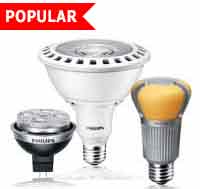Forget WiFi, Connect to the Internet Through Lightbulbs
Whether you’re using wireless internet in a coffee shop, stealing it from the guy next door, or competing for bandwidth at a conference, you’ve probably gotten frustrated at the slow speeds you face when more than one device is tapped into the network. As more and more people—and their many devices—access wireless internet, clogged airwaves are going to make it increasingly difficult to latch onto a reliable signal.
But radio waves are just one part of the spectrum that can carry our data. What if we could use other waves to surf the internet?
One German physicist, Harald Haas, has come up with a solution he calls “data through illumination”—taking the fiber out of fiber optics by sending data through an LED lightbulb that varies in intensity faster than the human eye can follow. It’s the same idea behind infrared remote controls, but far more powerful.
Haas says his invention, which he calls D-Light, can produce data rates faster than 10 megabits per second, which is speedier than your average broadband connection. He envisions a future where data for laptops, smartphones, and tablets is transmitted through the light in a room. And security would be a snap—if you can’t see the light, you can’t access the data.
You can imagine all kinds of uses for this technology, from public internet access through street lamps to auto-piloted cars that communicate through their headlights. And more data coming through the visible spectrum could help alleviate concerns that the electromagnetic waves that come with WiFi could adversely affect your health. Talk about the bright side.

















Comments